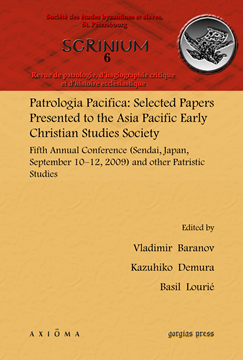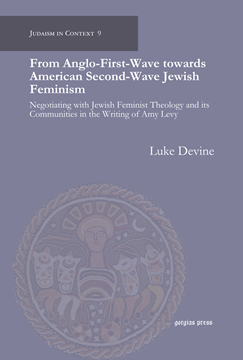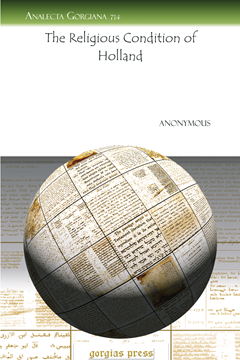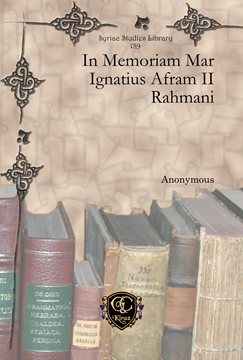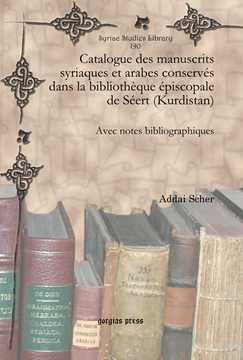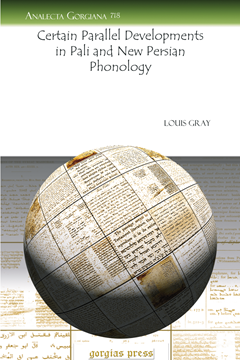Perspectives on Hebrew Scriptures VI
Comprising the Contents of Journal of Hebrew Scriptures, Vol. 9
Edited by Ehud Ben Zvi
ISBN: 978-1-61143-004-2
This volume incorporates all the articles and reviews published in Volume 9 (2009) of the Journal of Hebrew Scriptures.
$321.00 (USD)
Selected Papers Presented to the Asia Pacific Early Christian Studies Society
Fifth Annual Conference (Sendai, Japan, September 10–12, 2009) and other Patristic Studies
ISBN: 978-1-61143-005-9
The volume collects selected papers from the fifth annual APECSS conference which focused on the topic of letters from Christian Antiquity. The conference papers deal with epistolography from the apostle Paul up to Theodore the Studite (ninth century), considered in different aspects, namely, historiography of studies, literary form, Church history, dogmatic contents, attribution, etc. Other patristic studies include hagiography, liturgics, Christian art, early Egyptian monasticism, Islamic-Christian relations in the Middle Ages, and the Jewish background of Christianity.
$195.00 (USD)
From Anglo-First-Wave towards American Second-Wave Jewish Feminism
Negotiating with Jewish Feminist Theology and its Communities in the Writing of Amy Levy
By Luke Devine
Series: Judaism in Context 9
ISBN: 978-1-61719-915-8
This book completely redefines our understanding of fin de siècle Anglo-Jewish author Amy Levy and her writing. Demonstrating that Levy’s writing is less anti-Judaic and more profoundly influenced by the religious concerns of classical German Reformism, Luke Devine's innovative approach reveals that Levy's writing constitutes a genre whose female subjectivity evinces a concern for justice and authority that prefigures numerous aspects of Second-Wave Jewish feminist theory and its spiritual and theological underpinnings.
$185.00 (USD)
Neo-Assyrian Prophecy and the Hebrew Bible
Nahum, Habakkuk, and Zephaniah
By Russell Mack
ISBN: 978-1-4632-0077-0
Previous generations of scholars believed that prophecy was unique to ancient Israel. However, recent archaeological discoveries reveal that numerous societies in the ancient Near East practiced prophecy. This study examines the similarities and differences between Neo-Assyrian and biblical prophecy, particularly focusing on the 7th c. BCE prophets Nahum, Habakkuk, and Zephaniah, and discusses what implications these differences may have for our understanding of these prophets.
$183.00 (USD)
The Religious Condition of Holland
By Anonymous
Series: Analecta Gorgiana 714
ISBN: 978-1-61143-006-6
The author outlines religious practices and history of Protestant Churches in Holland. Most attention is paid to the Reformed Church of Holland, but other Churches are discussed. The influence of politics and important figureheads is described.
$34.00 (USD)
A General View of the Progress of Ethical Philosophy
By Anonymous
Series: Analecta Gorgiana 715
ISBN: 978-1-61143-007-3
The author reviews a volume on ethics, concluding it to be insufficient. Any logical system of ethics and morals must derive from the Bible. The author criticizes the volume’s author for his sympathetic treatment of David Hume.
$34.00 (USD)
In Memoriam Mar Ignatius Afram II Rahmani
By Anonymous
Series: Syriac Studies Library 189
ISBN: 978-1-61143-008-0
This volume, published at his death, celebrates the life and work of Syriac Catholic Patriarch Ignatius Afram II Rahmani (1848-1929), from his early life to his time as priest, bishop, and then patriarch.
$153.00 (USD)
Catalogue des manuscrits syriaques et arabes conservés dans la bibliothèque épiscopale de Séert (Kur
Avec notes bibliographiques
By Addai Scher
Series: Syriac Studies Library 190
ISBN: 978-1-61143-009-7
Addai Scher, the last bishop of Siirt (Seert), here describes the collection of Syriac and Arabic manuscripts of the episcopal library there, a total of 136 codices in various genres.
$116.00 (USD)
A Hymn to Nergal
Series: Analecta Gorgiana 716
ISBN: 978-1-61143-010-3
The god Nergal had his residence at Cutha, according to numerous passages in cuneiform literature. The ancient king of Uruk, Singamil (ca. 2750 B.C.E.), was also a devoted adherent of the Nergal cult, and fostered his worship at Uruk itself.
$34.00 (USD)
Certain Parallel Developments in Pali and New Persian Phonology
By Louis Gray
Series: Analecta Gorgiana 718
ISBN: 978-1-61143-012-7
Pali and New Persian are without influence on one another, yet they show a striking similarity in their development. All coincidences between the two languages are due to the operation of the laws of development which govern the Indo-Iranian languages.
$34.00 (USD)

